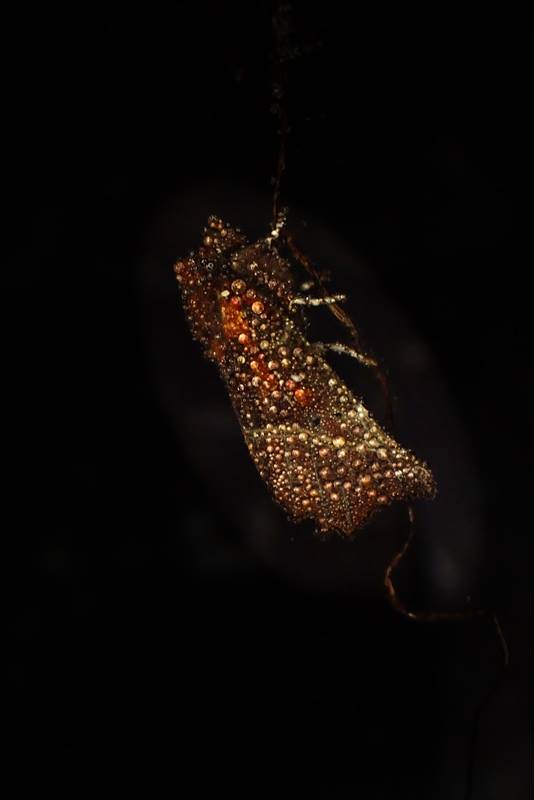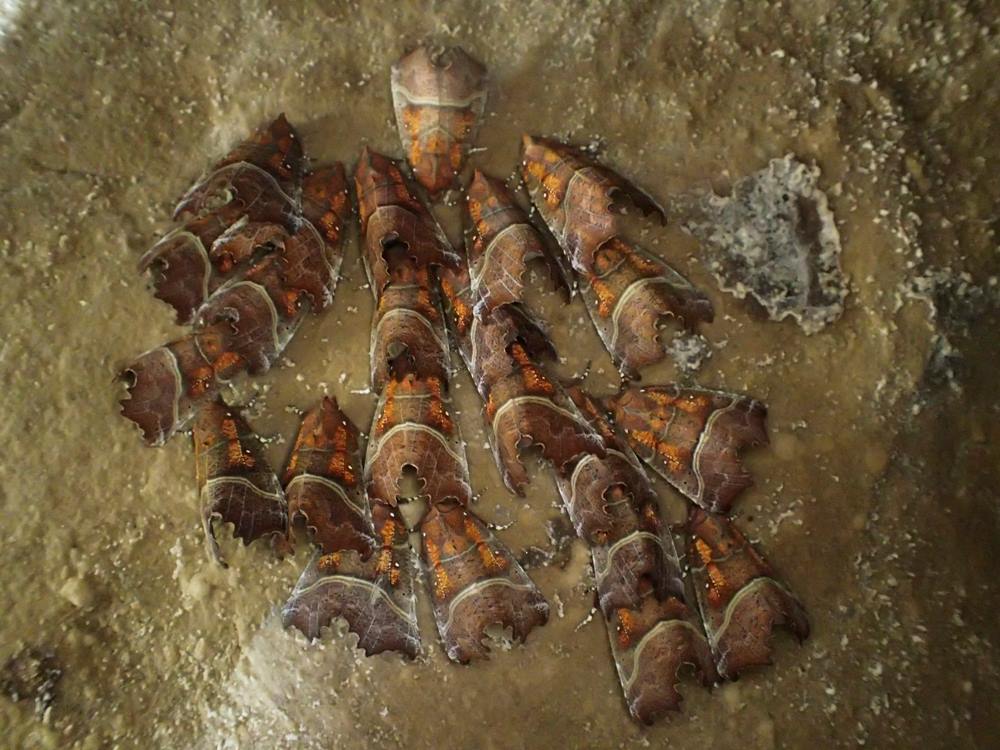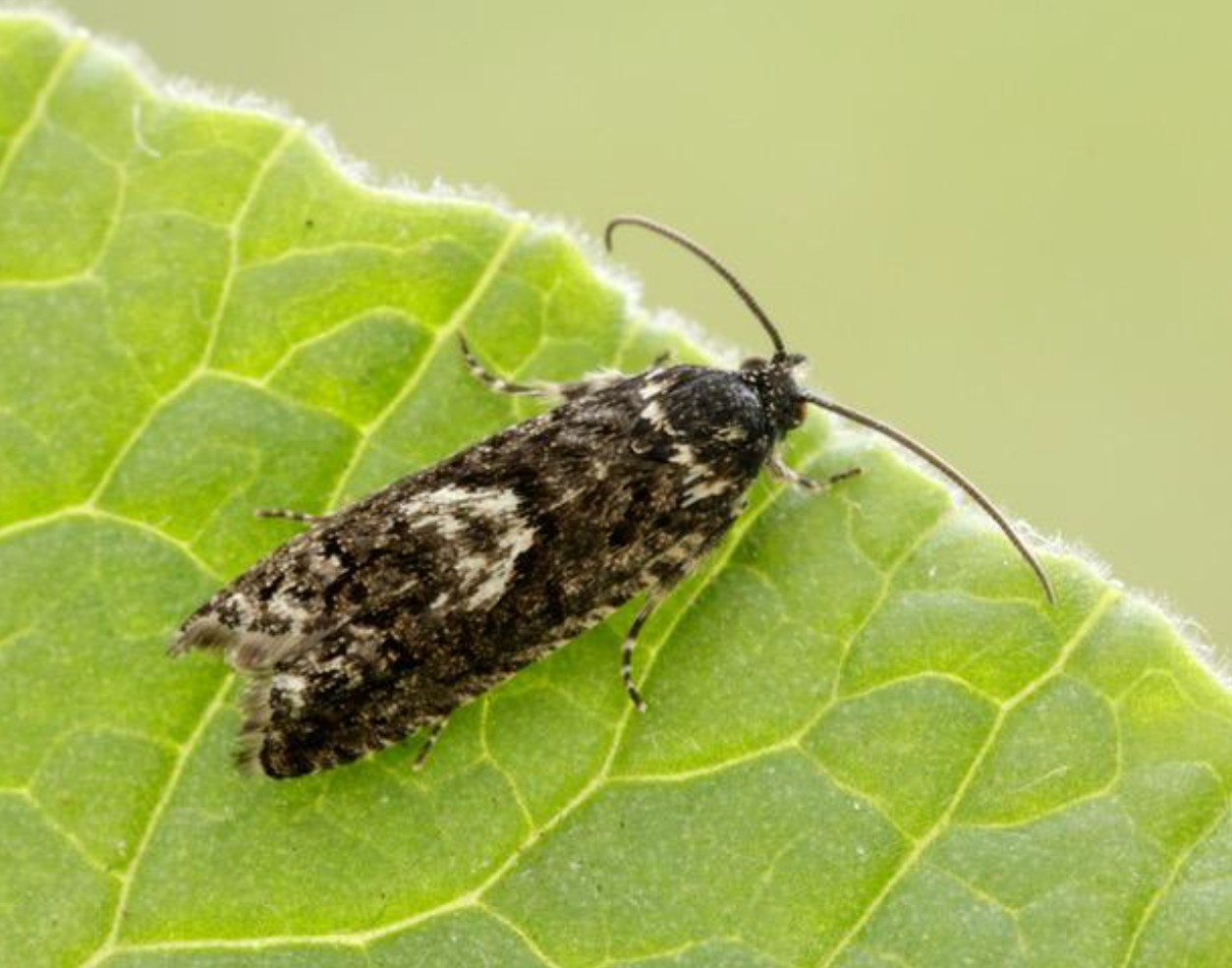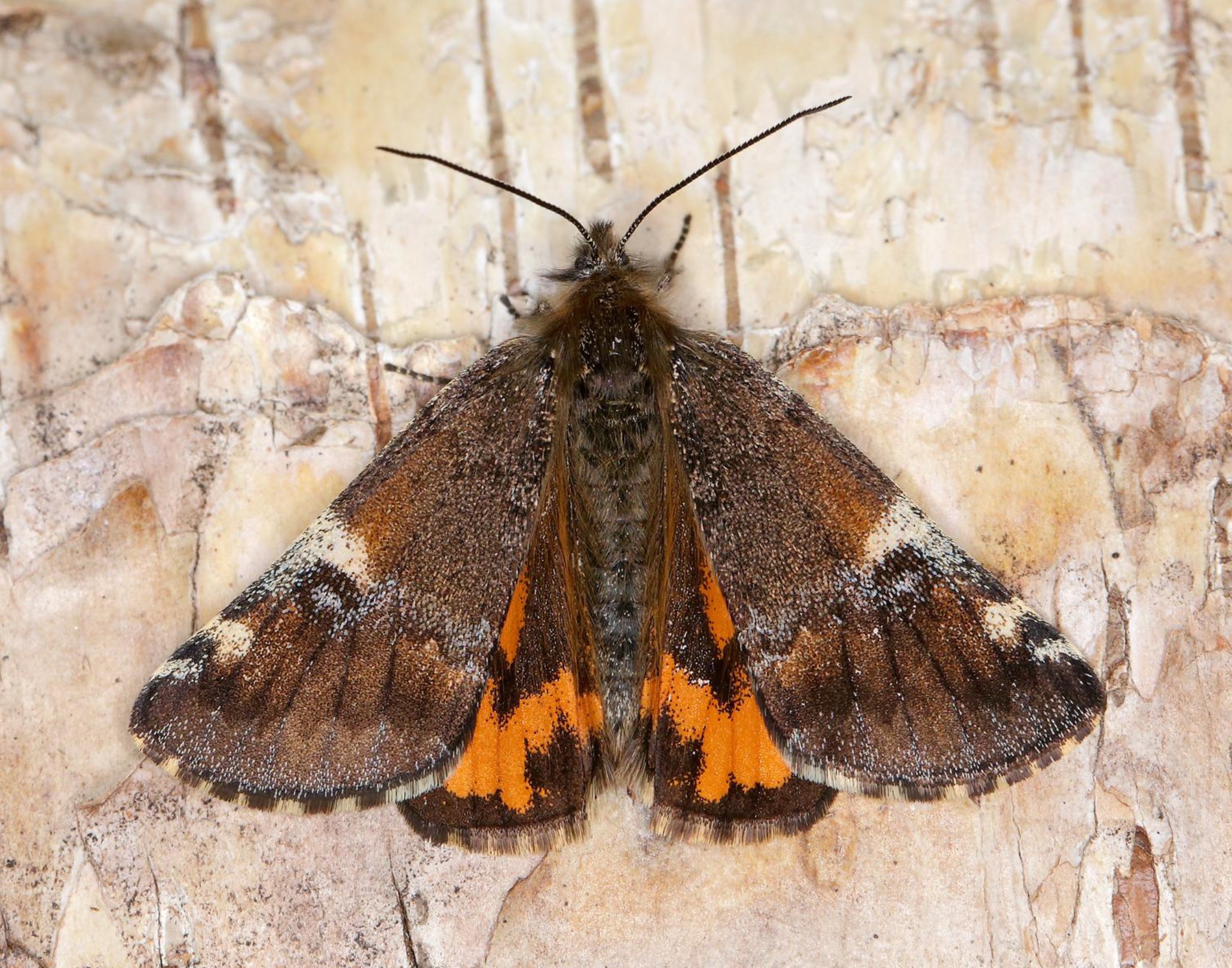The beautiful Herald moth is a true hibernator. Because of this adult moths can be found in any month of the year although the greatest number of records is in May when the moths emerge from hibernation to ‘herald’ Spring. There is another peak in August and September when the new generation of moths has hatched out. Over the past few years a few keen moth-ers in the Lothians, particularly Katty Baird and Mark Cubitt, have explored a wide range of possible hibernation sites throughout Scotland and as a result have added a huge amount to what we know about these moths (see https://www.facebook.com/hibernatingheralds/).
Anywhere which is dark, humid and maintains an even temperature is suitable for hibernation such as caves, mines, culverts and cellars. The moths pick out the most suitable parts of the site on the ceiling or on overhangs and as a result are often grouped together as in the photo where 24 moths are clustered together. Although the moths are torpid and frequently covered in condensation (as in the next photo) they can and do move about with changing weather conditions outside. As Spring approaches the moths have been seen to mate where they hibernate although this is probably more frequent after they emerge.
Once emerged from April onwards the moths are frequent visitors to ‘sugar’ and sallow catkins. They do come to light and the vast majority of the 200 plus D&G records are from moth traps (only a few of our records are of hibernating moths i.e. from a cave and a log store) Although rarely seen in numbers there are records from all of the summer months although fewest from July. The moth lays its eggs on willows and the caterpillar is bright green with narrow yellow lines between segments and a thin longitudinal stripe. Once fully fed in pupates in a cocoon on the tree by spinning two leaves together.
This is a relatively common and widespread moth throughout Scotland and the rest of the UK. However, the recent work on exploring its hibernation sites has added quite a few additions to its distribution suggesting it might be more widespread than the evidence from moth traps alone might suggest.
D&G clearly has a potential for exploring all kinds of possible hibernating sites for the Herald and I hope that you will consider poking around in your local cave or cellar to see what you can find (do be certain that all of the sensible health and safety measures are taken.). An extra bonus would be if you found another moth hibernating there – the Tissue.
Nowhere is this a common moth but we do have six records from D&G including some from each Vice County (although the Dumfriesshire one is now 150 years old!). It does seem to be easier to find hibernating rather than any other method but even this is not easy as they are far better camouflaged than the Herald and may creep into crevices as the weather outside becomes more severe. The Tissue’s caterpillars feed on Buckthorn or Alder Buckthorn, both uncommon plants in Scotland although Alder Buckthorn is most widespread in D&G. It is likely that the Tissue is not as rare in D&G as it appears at the moment and searching for its hibernation sites might be a good way of proving it!
There are also hibernating butterflies found in the same sort of places as the moths along with odd creatures like the cave spider which does prey on these over wintering Lepidoptera!






